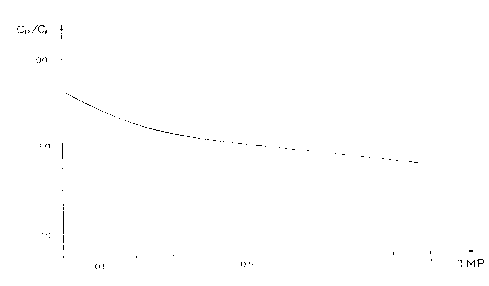Some of the information on this Web page has been provided by external sources. The Government of Canada is not responsible for the accuracy, reliability or currency of the information supplied by external sources. Users wishing to rely upon this information should consult directly with the source of the information. Content provided by external sources is not subject to official languages, privacy and accessibility requirements.
Any discrepancies in the text and image of the Claims and Abstract are due to differing posting times. Text of the Claims and Abstract are posted:
| (12) Patent: | (11) CA 2134984 |
|---|---|
| (54) English Title: | METHOD FOR OBTAINED HIGH-QUALITY PROTEIN PRODUCTS FROM WHEY |
| (54) French Title: | METHODE POUR L'OBTENTION DE PRODUITS DE PROTEINES DE GRANDE QUALITE A PARTIR DE PETIT-LAIT |
| Status: | Term Expired - Post Grant Beyond Limit |
| (51) International Patent Classification (IPC): |
|
|---|---|
| (72) Inventors : |
|
| (73) Owners : |
|
| (71) Applicants : |
|
| (74) Agent: | BORDEN LADNER GERVAIS LLP |
| (74) Associate agent: | |
| (45) Issued: | 1999-08-31 |
| (86) PCT Filing Date: | 1993-04-29 |
| (87) Open to Public Inspection: | 1993-11-11 |
| Examination requested: | 1996-02-14 |
| Availability of licence: | N/A |
| Dedicated to the Public: | N/A |
| (25) Language of filing: | English |
| Patent Cooperation Treaty (PCT): | Yes |
|---|---|
| (86) PCT Filing Number: | PCT/SE1993/000378 |
| (87) International Publication Number: | WO 1993021781 |
| (85) National Entry: | 1994-11-02 |
| (30) Application Priority Data: | ||||||
|---|---|---|---|---|---|---|
|
High quality protein products are obtained from whey by subjecting whey to
cross flow filtration in microfilter. The whey
and retentate are brought to circulate in a circulation path on one side of
the membrane area of the microfilter, while whey which
has passed the membrane area (permeate) is circulating in a second path on the
other side of the membrane area in such a way
that the pressure drop over the whole membrane area is kept constant and below
0.8 bar. At that there is obtained a fractionation
of milk serum protein such that denatured milk serum protein and fat are
retained in the retentate and undenatured milk serum
protein passes the membrane into the permeate. After an end treatment there is
obtained a whey protein product which is rich in
.alpha.-lactalbumin and .beta.-lactoglobulin and has a low fat content.
On obtient des produits à base de protéines de haute qualité à partir du lactosérum en soumettant celui-ci à une filtration à courant transversal dans un microfiltre. Le lactosérum et le produit de rétention circulent dans un circuit placé d'un côté de la zone membranaire de ce microfiltre alors que la partie du lactosérum qui a franchi la membrane par perméation circule dans un deuxième circuit placé de l'autre côté de cette membrane de façon que la baisse de pression reste constante sur l'ensemble de la zone membranaire et inférieure à 0,8 bar. On obtient ainsi un fractionnement des protéines du lactosérum faisant que les protéines et graisses de lactosérum dénaturées sont retenues dans le produit de rétention alors que les protéines de lactosérum non dénaturées franchissent la membrane et se retrouvent dans le perméat. On obtient, après un traitement final, un produit à base de protéines de lactosérum qui est riche en alpha-lactolbumine et en beta-lactoglobuline et présente une faible teneur en matières grasses.
Note: Claims are shown in the official language in which they were submitted.
Note: Descriptions are shown in the official language in which they were submitted.

2024-08-01:As part of the Next Generation Patents (NGP) transition, the Canadian Patents Database (CPD) now contains a more detailed Event History, which replicates the Event Log of our new back-office solution.
Please note that "Inactive:" events refers to events no longer in use in our new back-office solution.
For a clearer understanding of the status of the application/patent presented on this page, the site Disclaimer , as well as the definitions for Patent , Event History , Maintenance Fee and Payment History should be consulted.
| Description | Date |
|---|---|
| Inactive: Expired (new Act pat) | 2013-04-29 |
| Inactive: IPC from MCD | 2006-03-11 |
| Inactive: IPC from MCD | 2006-03-11 |
| Grant by Issuance | 1999-08-31 |
| Inactive: Cover page published | 1999-08-30 |
| Pre-grant | 1999-05-25 |
| Inactive: Final fee received | 1999-05-25 |
| Letter Sent | 1998-11-23 |
| Notice of Allowance is Issued | 1998-11-23 |
| Notice of Allowance is Issued | 1998-11-23 |
| Inactive: Status info is complete as of Log entry date | 1998-11-19 |
| Inactive: Application prosecuted on TS as of Log entry date | 1998-11-19 |
| Inactive: Approved for allowance (AFA) | 1998-11-10 |
| Request for Examination Requirements Determined Compliant | 1996-02-14 |
| All Requirements for Examination Determined Compliant | 1996-02-14 |
| Application Published (Open to Public Inspection) | 1993-11-11 |
There is no abandonment history.
The last payment was received on 1999-04-13
Note : If the full payment has not been received on or before the date indicated, a further fee may be required which may be one of the following
Please refer to the CIPO Patent Fees web page to see all current fee amounts.
Note: Records showing the ownership history in alphabetical order.
| Current Owners on Record |
|---|
| TETRA LAVAL HOLDINGS & FINANCE S.A. |
| ALFA-LAVAL FOOD ENGINEERING AB |
| Past Owners on Record |
|---|
| JOHN JENSEN |
| PETER HENRIK LARSEN |